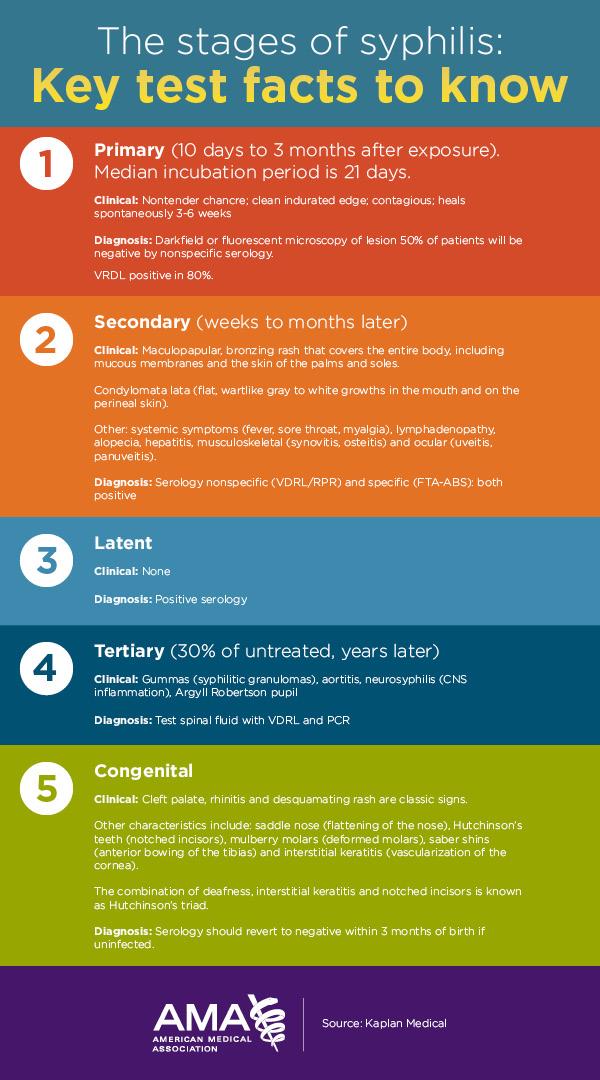Getting ready for the United States Medical Licensing Examination® (USMLE®) is no easy feat, but we’re sharing expert insights to help give you a leg up. Take a look at the exclusive scoop on this month’s most-missed USMLE test prep question. Think you have what it takes to rise above your peers? Test your USMLE knowledge, and view an expert video explanation of the answer from Kaplan Medical. Once you’ve got this question under your belt, be sure to test your knowledge with other posts in this series.
This month’s question explores microbiology and reproductive topics.
Ready. Set. Go.
This month’s question that stumped most students
A 28 year-old woman comes to the physician because of a fever, mild headache and sore throat. Her temperature is 39.0ºC (102.2ºF), and her pulse is 90/min. Physical examination shows generalized lymphadenopathy and a diffuse, bronze-colored, maculopapular rash covering the body, palms and soles. Which of the following laboratory studies is the most appropriate next step?
A. Biopsy with darkfield microscopy
B. ELISA
C. FTA-ABS
D. Microhemagglutination
E. TORCH screen
F. VDRL
The correct answer is F.
Kaplan says, here’s why
This patient has signs and symptoms of secondary syphilis, caused by Treponema pallidum. Secondary syphilis often occurs a few weeks to months after the development of the genital chancre in primary syphilis.
Secondary syphilis is identified by the finding of a maculopapular, bronzing rash that covers the entire body, including mucous membranes and the skin of the palms and soles. In addition, condylomata lata (flat, wartlike gray to white growths in the mouth and on the perineal skin) are characteristic of this stage of the disease. Secondary syphilis also causes systemic symptoms (fever, sore throat, myalgia), lymphadenopathy, alopecia, hepatitis and musculoskeletal (synovitis, osteitis) as well as ocular (uveitis, panuveitis) manifestations.
The best initial test at this time (because of ease and low expense) is a nontreponemal serologic test such as the VDRL (Venereal Disease Research Lab). Two other nontreponemal tests include the Rapid Plasma Reagin (RPR) and Toludine Red Unheated Serum Test (TRUST). The nontreponemal tests depend on the production of antibodies that cross-react with and agglutinate mammalian cardiolipin. These antibodies will rise in late primary syphilis and fall in late secondary syphilis. Therefore, if a negative result were obtained with these tests, follow up with a specific treponemal serologic test such as the FTA-ABS (fluorescent treponemal antibody-absorption) test or the microhemagglutination test. False positive results on VDRL can be seen with the following:
- Viral infection (mononucleosis, hepatitis)
- Drugs (Phenothiazines, such as chlorpromazine; procainamide)
- Rheumatic fever
- Lupus and Leprosy
Penicillin is the treatment of choice for syphilis. Options for the treatment of early syphilis in penicillin-allergic patients include tetracyclines, macrolides or ceftriaxone.
Clinical pearl: During penicillin therapy for syphilis, patients may develop the Jarisch-Herxheimer reaction, which is an acute febrile reaction that is often associated with headache and myalgias within the first 24 hours of treatment due to the release of lipopolysaccharide by the dying spirochetes.

Why you shouldn’t choose the other answers
Read these explanations to understand the important rationale for each answer to help you prepare with future studying.
Choice A: Biopsy with darkfield illumination is the diagnostic test of choice for primary syphilis. Primary syphilis is characterized by the formation of chancres: nontender, indurated lesions usually found around the genitalia. Biopsy of the chancre with use of special means for visualization, such as darkfield microscopy or direct fluorescent antibody, will be diagnostic long before the patient will seroconvert.
Choice B: ELISA, or enzyme-linked immunosorbent assay, is a very common immunologic diagnostic test, and there are literally hundreds of variations of this test to identify antibodies against an equivalent number of pathogens. ELISA is used as the screening test for human immunodeficiency virus (HIV) infection. HIV does not cause the formation of a maculopapular, bronzing rash.
Choice C: FTA-ABS is the confirmatory test for a positive VDRL in secondary syphilis and is the first choice of diagnostic in tertiary syphilis, when the nontreponemal tests may revert to negative. Tertiary syphilis (neurosyphilis) is characterized by the finding of gummas (syphilitic granulomas) in the central nervous system and vasculature.
Choice D: Microhemagglutination is another treponeme-specific serologic test. It can be used as the confirmatory test for a positive VDRL in secondary syphilis and is both cost-effective and accurate in tertiary syphilis, when the nontreponemal tests may revert to negative.
Choice E: The TORCH screen is the screening test used in neonates suspected of having acquired any of a variety of in utero infections. TORCH is defined as:
- Toxoplasma
- Other (O also used to be the abbreviation for syphilis)
- Rubella
- Cytomegalovirus
- HIV, herpes simplex and occasionally hepatitis B
All of these pathogens can be transplacentally transmitted, and the TORCH screen identifies which pathogens, if any, may have actually been transferred.
Important facts to remember
- Secondary syphilis: bronze-colored, maculopapular rash covering the patient's body and involving the palms and soles.
- Condylomata lata: flat, wart-like lesions on the perigenital mucosa.
- VDRL is a nontreponemal serologic test that depends on the identification of antibodies that agglutinate mammalian cardiolipin.
- During secondary syphilis, VDRL is the best test to order for this patient. It must then be confirmed by the FTA-ABS.
- During primary syphilis, biopsy of a chancre is examined with darkfield microscopy.
- During tertiary syphilis, a specific treponemal serologic test, such as the FTA-ABS or microhemagglutination test, is necessary because the VDRL will frequently revert to negative in this phase.
Want more USMLE study tips? Get your definitive USMLE Step 1 guide.





